We went to Blenheim Palace after breakfast. We had a smooth drive there but then found the carpark was very full because there was a classic car show on. It meant we had a longer walk to get to the palace.
We got in quickly as a lot of people were lined up to change their tickets
. There is a special deal at present where you can change an ordinary entrance ticket for one which gives a year's entrance. We were also given ticket for double entry for the price of one to other homes. We had some of these from Beaulieu so we assume the homes are finding numbers down with the credit crunch.
There was a sign at the door saying no photographs inside. We first went down a hall with vaulted ceiling and lined with marble busts. Most were very old and some were of the family. Later hallways had more statues, some Asian porcelain and a full cabinet of lead soldiers dating from 1890 that greatly fascinated a young Winston Churchill.
There were a lot of people in the first rooms and there was a person letting us though in groups. These were the rooms mainly dedicated to Winston Churchill. There were letters he wrote home to his parents and grandmother, from school, holidays and later from Sandhurst. It was clear that his relationship with his father wasn’t great, which I already had heard
. What I didn’t know is that he did not do particularly well at his schools, although he did get good results at Sandhurst.
There was a lot of information about his skill as a painter. A number of his works were used by Hallmark on cards. His first exhibition was also in the USA. He was asked to show and declined but then changed his mind after pressure from his daughter and from President Roosevelt. I knew he was a good writer but learned that he had earned much needed extra money by writing articles for newspapers during the early days of his military career.
The three other things I especially noted were all different. He was made an honoury US citizen in 1987 by order of J F Kennedy. There was a display of the curls he had had cut off when he was 5. He quoted about a stay that it had all he needed with hot baths, cold champagne, new peas and old brandy.
The Great Hall was even bigger than we expected
. It is 67 feet high with Grinling Gibbons carving all around. The ceiling was wonderfully colourful having been painted in 1716 at a cost then of 1000 pounds. The next room was full of porcelain in glass cases (mainly Sevres and Meissen). One set had been given to a previous Duke by the King of Poland in exchange for a pack of stag hounds.
There was a new writing desk in the next room, designed by Viscount Linley and made for the millennium. It was mainly mahogany and we were told thousands of hours had gone into its design and manufacture. The desk had a folded down front which had a picture of the palace built into it with other woods. At the top was a scale model of the palace clock. We couldn’t see inside but it had a scale model of the palace in it with space for storage in the design.
The various State rooms had either tapestries or paintings on all the walls, huge marble fireplaces (one was a strange purple colour) and very ornate ceilings
. In one there was a lovely bronze of the 10th Duke as a baby and another had a very ornate crib.
There was information about the 1st Duke in various rooms. His father was also a Winston Churchill, a royalist who was fined by Cromwell and whose motto was Faithful but Unfortunate. The 1st Duke had lead the allied force against the French in the Battle of Blenheim. There was a huge silver table piece in the dining room showing the battle. There was also a transcript of his dispatch recording victory and we were told the original was written on the back of a tavern bill.
One of the State rooms had a standard on display above the fireplace. This is known as the Quit rent. Every year, on the 13th of August (the anniversary of the battle of Blenheim) the Duke presents it to the sovereign at Windsor as a token rent.
The former saloon is now the State Dining Room. It is used by the family for Christmas
. The table dated to 1850 and when extended will seat 40. There was certainly enough space for 40 in the room. There were very ornate gold candlesticks on the table as well as silver cutlery and porcelain plates set out for about 10 people. The ceiling here had taken 16 months to paint.
One of the room stewards was very chatty. He explained that remembering 'Did Mary Ever Visit Brighton Beach’ would allow you to remember the hierarchy – Duke, Marquis, Earl. Viscount, Baron and Baroness. He pointed out the clock in the room also had a barometer and a dragon in the cornices. He had worked here for 20 years and said he was still finding out new things.
The library has over 100,000 books, mainly on the ground floor. The steward told me that the books upstairs are mainly new books with all the valuable ones being downstairs. This includes about 30 years worth of Vanity Fair and a book about Agriculture in Kent. The steward said she would love to read the former!! There was a large statue in front of a doorway and there was a narrow spiral stairway to the top part, which was much newer
. There was a full organ at the end of the room.
The final room was the chapel. This was dominated by a memorial to a previous Duke and his 2 sons (who died young). It was white, about 8m high and had the family depicted along with angels. As the Duke’s name was John, John B decided that he should have a similar memorial on his death, paid for by me, his loving wife of course.
We had a nice lunch but had to eat it outside and it was cool and windy. We then walked around the formal gardens before leaving. We stopped to look at some of the classic cars on our way out.
We spent the next part of the afternoon caching in the area. We saw a bit of the village of Woodstock then also visited another nice village near by. We ended up in the outskirts of Oxford, which was very quiet when we drove thorough. The whole area was very attractive, especially when the sun finally emerged and it even got warm.
The most interesting cache called the Treacle Well was in a very small place called Binsey. The cache notes say "Binsey was the home of Miss Prickett (the Red Queen), governess to Alice Liddell, or Alice in Wonderland. It is known that the Rev. Dodgson (aka Lewis Carroll) and Alice had visited the well several times and there is little doubt that it was the inspiration for the story told by the Dormouse. The names of the three little sisters in the Treacle Well (Elsie, Lacie and Tillie) also refer to the names of the three Liddell sisters.
Treacle Well is in the churchyard of St. Margaret's church in Binsey (just outside Oxford), and the water was reputed to have been blessed by St. Margaret and to have the ability to cure blindness. In medieval times the term "treacle" meant an antidote to poison, so a treacle well was a healing well, and was a pilgrimage site for centuries. Henry VIII drunk its water in his quest for a male heir, but little good did that do him.
Lewis Carroll used the well in Alice's Adventures as the setting of the Dormouse's story in the Mad Tea Party chapter.
I was talking to a woman who was there looking or blackberries and she asked if I was looking for the well. Her version is that her parents wanted Margaret to marry a particular man but she wanted to join the church. So she prayed for him to become ill so she didn’t have to marry him and he became blind. She was then full of remorse so prayed for him to be cured and was told to wash his eyes in the well water. She did and he was cured.
We got back to London in time for John to have a snooze before tea.
Fast cars, a Palace and treacle
Sunday, August 29, 2010
 London, England, United Kingdom
London, England, United Kingdom
Other Entries
-
86'By yon bonnie banks'
Aug 1217 days prior Inverness, United Kingdomphoto_camera17videocam 0comment 0
Inverness, United Kingdomphoto_camera17videocam 0comment 0 -
87To the top at John O'Groat's
Aug 1316 days prior Inverness, United Kingdomphoto_camera13videocam 0comment 0
Inverness, United Kingdomphoto_camera13videocam 0comment 0 -
88Dawdling down to Dumfries
Aug 1415 days prior Dumfries, United Kingdomphoto_camera14videocam 0comment 0
Dumfries, United Kingdomphoto_camera14videocam 0comment 0 -
89A visit to wee Robbie
Aug 1514 days prior Dumfries, United Kingdomphoto_camera22videocam 0comment 0
Dumfries, United Kingdomphoto_camera22videocam 0comment 0 -
90Off to see cookie bear
Aug 1613 days prior Shrewsbury, United Kingdomphoto_camera8videocam 0comment 0
Shrewsbury, United Kingdomphoto_camera8videocam 0comment 0 -
91Hanging out with Sabrina
Aug 1712 days prior Shrewsbury, United Kingdomphoto_camera20videocam 0comment 0
Shrewsbury, United Kingdomphoto_camera20videocam 0comment 0 -
92Welcome to Wales boyo
Aug 1811 days prior Cardiff, United Kingdomphoto_camera9videocam 0comment 0
Cardiff, United Kingdomphoto_camera9videocam 0comment 0 -
93Wales in the wet
Aug 1910 days prior Cardiff, United Kingdomphoto_camera5videocam 0comment 1
Cardiff, United Kingdomphoto_camera5videocam 0comment 1 -
94Cardiff Castle to Barnhill Cottage
Aug 209 days prior Brampford Speke, United Kingdomphoto_camera16videocam 0comment 1
Brampford Speke, United Kingdomphoto_camera16videocam 0comment 1 -
95The Black Adderrrr....
Aug 218 days prior Brampford Speke, United Kingdomphoto_camera7videocam 0comment 0
Brampford Speke, United Kingdomphoto_camera7videocam 0comment 0 -
96Visiting the rellies in Kents Caves
Aug 227 days prior Brampford Speke, United Kingdomphoto_camera12videocam 0comment 0
Brampford Speke, United Kingdomphoto_camera12videocam 0comment 0 -
97Moor travels
Aug 236 days prior Brampford Speke, United Kingdomphoto_camera14videocam 0comment 0
Brampford Speke, United Kingdomphoto_camera14videocam 0comment 0 -
98Motoring to Bealieu
Aug 245 days prior Chichester, United Kingdomphoto_camera10videocam 0comment 1
Chichester, United Kingdomphoto_camera10videocam 0comment 1 -
991066 and all that
Aug 254 days prior Chichester, United Kingdomphoto_camera3videocam 0comment 0
Chichester, United Kingdomphoto_camera3videocam 0comment 0 -
100Catching up with Chalky and Pam
Aug 263 days prior Chichester, United Kingdomphoto_camera16videocam 0comment 0
Chichester, United Kingdomphoto_camera16videocam 0comment 0 -
101Visiting Leeds Castle
Aug 272 days prior Chichester, United Kingdomphoto_camera10videocam 0comment 0
Chichester, United Kingdomphoto_camera10videocam 0comment 0 -
102Chichester to Winchester to London
Aug 281 day prior London, United Kingdomphoto_camera26videocam 0comment 0
London, United Kingdomphoto_camera26videocam 0comment 0 -
103Fast cars, a Palace and treacle
Aug 29 London, United Kingdomphoto_camera6videocam 0comment 0
London, United Kingdomphoto_camera6videocam 0comment 0 -
104Cruising down the River
Aug 301 day later London, United Kingdomphoto_camera11videocam 0comment 0
London, United Kingdomphoto_camera11videocam 0comment 0 -
105There'll be blue birds over......
Aug 312 days later London, United Kingdomphoto_camera22videocam 0comment 0
London, United Kingdomphoto_camera22videocam 0comment 0 -
106To Ireland begorrah...
Sep 013 days later Ballymacaw, Irelandphoto_camera2videocam 0comment 0
Ballymacaw, Irelandphoto_camera2videocam 0comment 0 -
107A fox on the run
Sep 024 days later Ballymacaw, Irelandphoto_camera3videocam 0comment 0
Ballymacaw, Irelandphoto_camera3videocam 0comment 0 -
108Cuisin' the Copper Coast
Sep 035 days later Ballymacaw, Irelandphoto_camera6videocam 0comment 0
Ballymacaw, Irelandphoto_camera6videocam 0comment 0 -
109Quick note to everyone re earthquake
Sep 046 days later Ballymacaw, Irelandphoto_camera0videocam 0comment 1
Ballymacaw, Irelandphoto_camera0videocam 0comment 1 -
110A shaky start
Sep 046 days later Ballymacaw, Irelandphoto_camera6videocam 0comment 0
Ballymacaw, Irelandphoto_camera6videocam 0comment 0 -
111From Famine ships to hurling
Sep 057 days later Ballymacaw, Irelandphoto_camera4videocam 0comment 0
Ballymacaw, Irelandphoto_camera4videocam 0comment 0 -
112By Hook or by Crooke
Sep 068 days later Ballymacaw, Irelandphoto_camera14videocam 0comment 0
Ballymacaw, Irelandphoto_camera14videocam 0comment 0 -
113It's a long way...
Sep 079 days later Ballymacaw, Irelandphoto_camera17videocam 0comment 0
Ballymacaw, Irelandphoto_camera17videocam 0comment 0 -
114Wandering about Wexford
Sep 0810 days later Ballymacaw, Irelandphoto_camera15videocam 0comment 0
Ballymacaw, Irelandphoto_camera15videocam 0comment 0 -
115The Rain of Kerry
Sep 0911 days later Ballymacaw, Irelandphoto_camera5videocam 0comment 0
Ballymacaw, Irelandphoto_camera5videocam 0comment 0 -
116Nothin' much doin'
Sep 1012 days later Ballymacaw, Irelandphoto_camera3videocam 0comment 0
Ballymacaw, Irelandphoto_camera3videocam 0comment 0 -
117A load of Blarney
Sep 1113 days later Ballymacaw, Irelandphoto_camera15videocam 0comment 0
Ballymacaw, Irelandphoto_camera15videocam 0comment 0 -
118The products of Waterford
Sep 1214 days later Ballymacaw, Irelandphoto_camera13videocam 0comment 0
Ballymacaw, Irelandphoto_camera13videocam 0comment 0 -
119Doin' Dublin
Sep 1315 days later Ballymacaw, Irelandphoto_camera14videocam 0comment 1
Ballymacaw, Irelandphoto_camera14videocam 0comment 1 -
120Old fossils in Kilkenny
Sep 1416 days later Ballymacaw, Irelandphoto_camera17videocam 0comment 0
Ballymacaw, Irelandphoto_camera17videocam 0comment 0 -
121Ciao Ballymacaw
Sep 1517 days later Rome, Italyphoto_camera2videocam 0comment 0
Rome, Italyphoto_camera2videocam 0comment 0

 London, England, United Kingdom
London, England, United Kingdom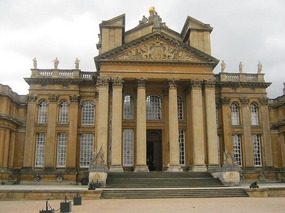
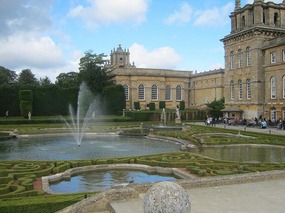
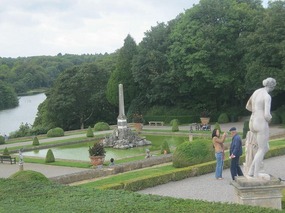
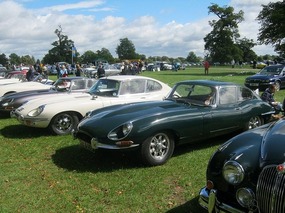
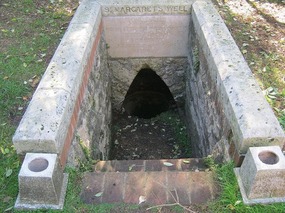
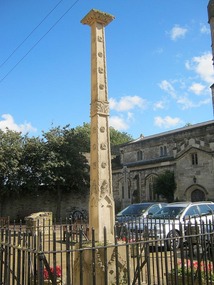



2025-05-22